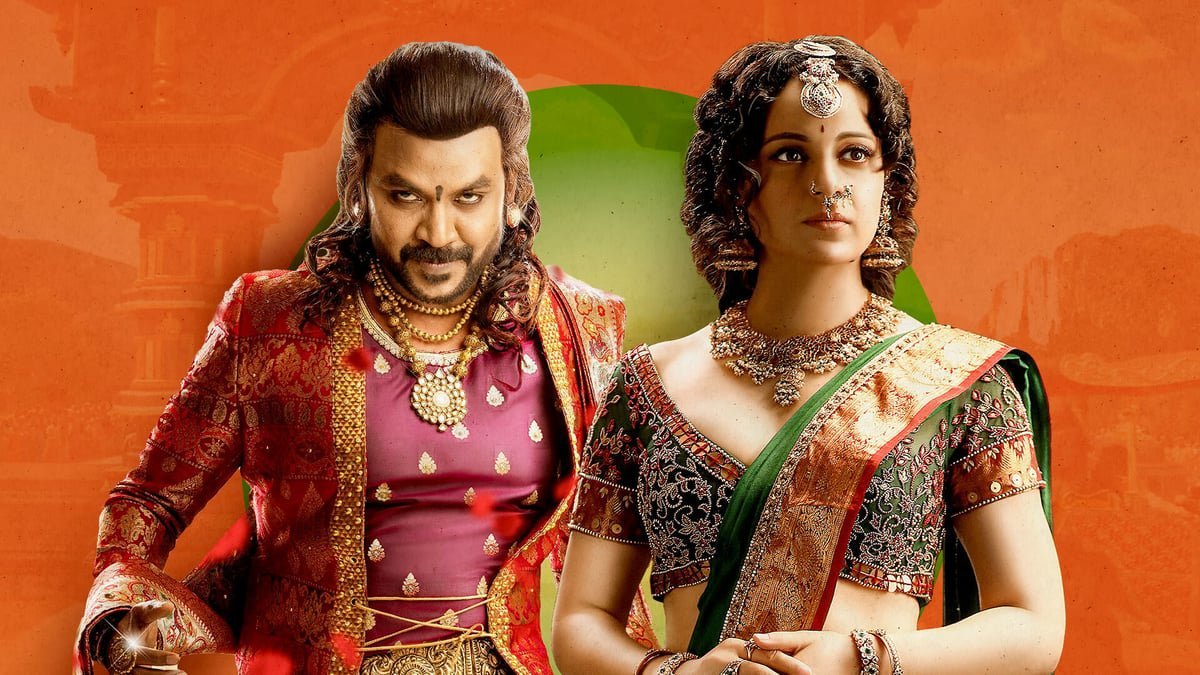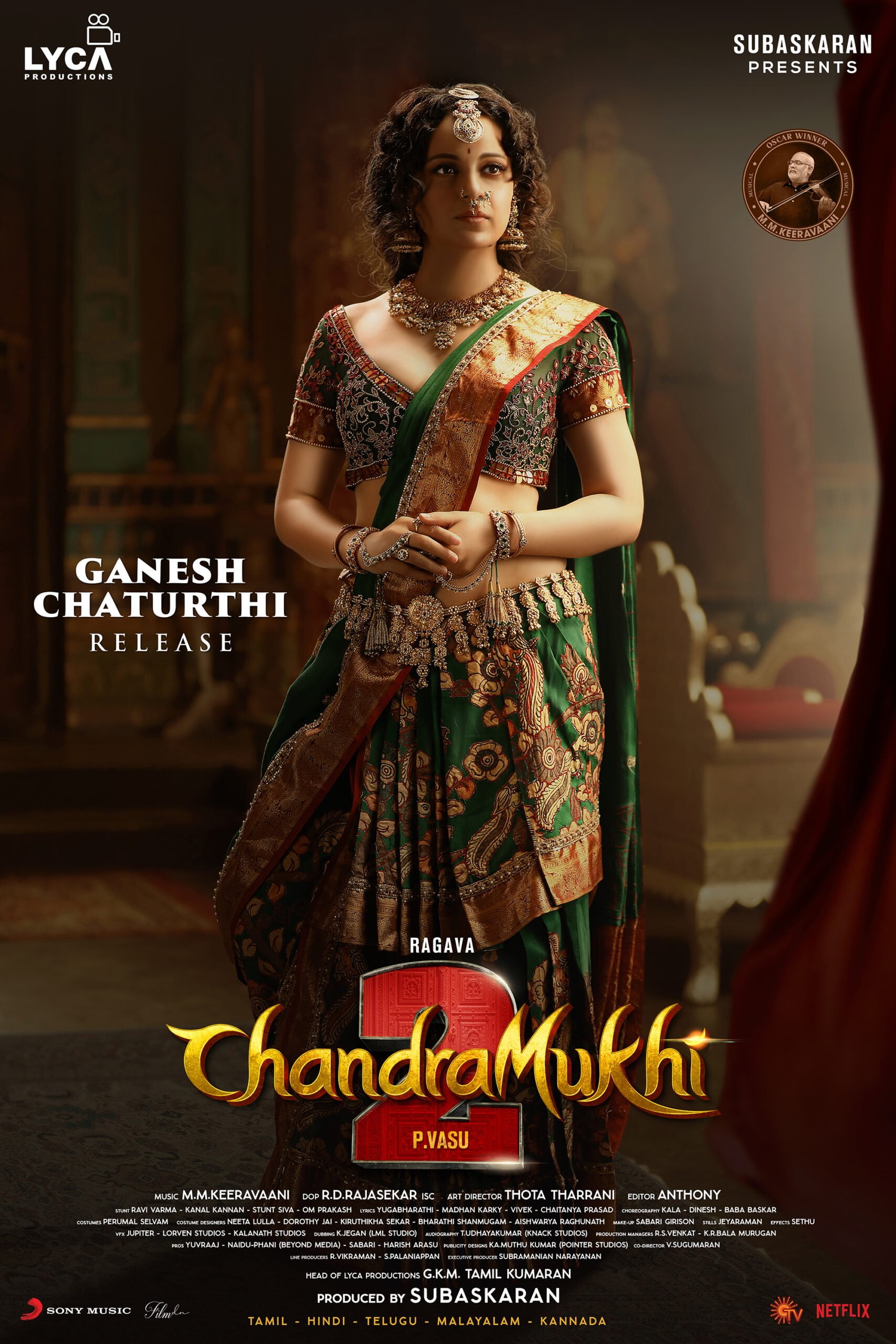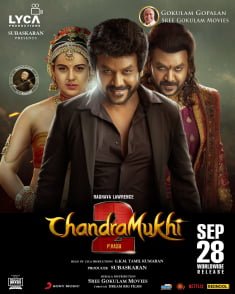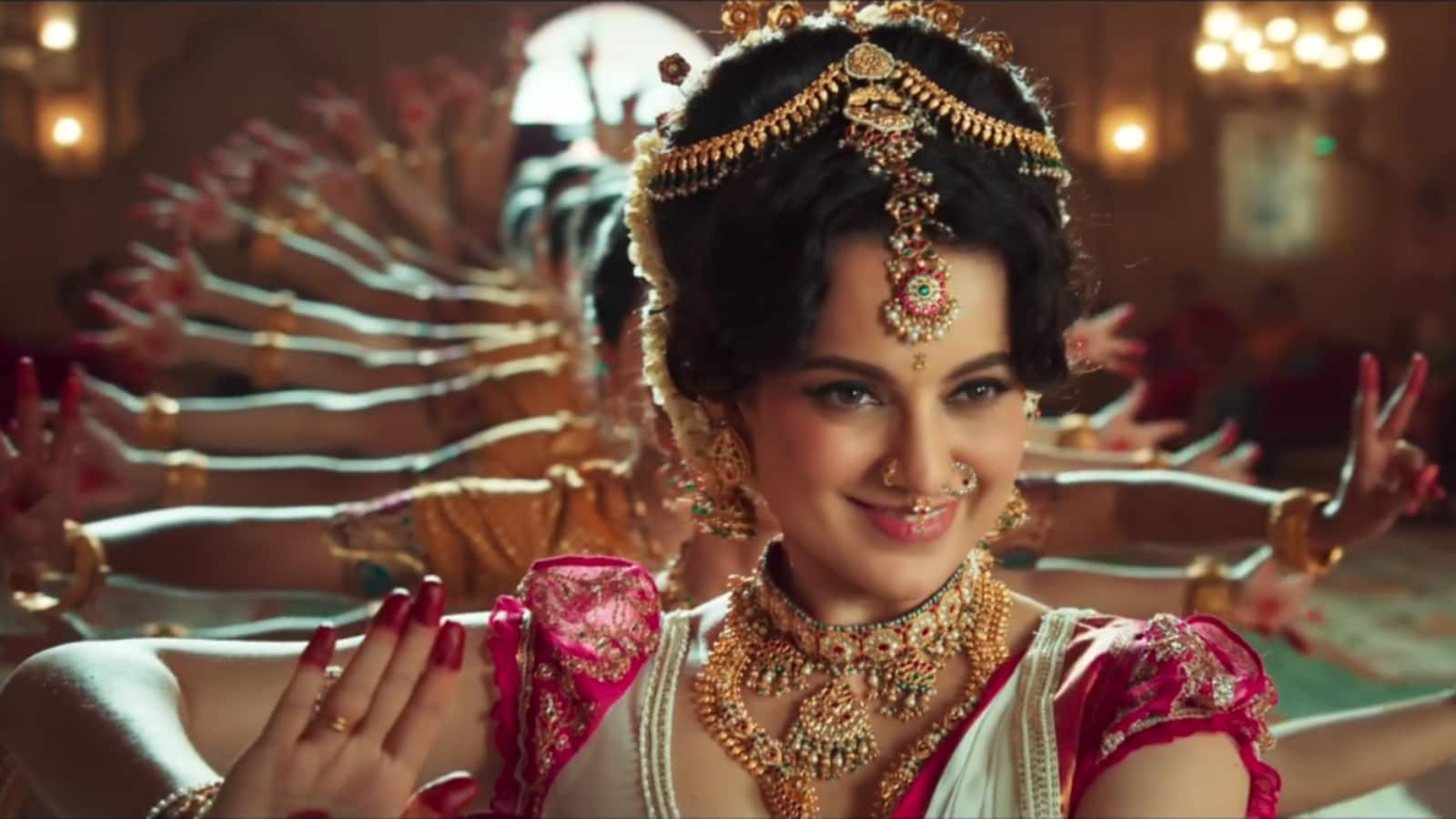Every film industry has their own legendary classics that have endured the test of time, putting its own signature among the audience. Chandramukhi starring Rajinikanth, Nayanthara, Jyothika, Prabhu was one such commercialised version of a Malayalam classic for the Kollywood industry which was a huge hit during the year 2005.
Chandramukhi 2 was released on September 26, starring prominent actors including Raghava Lawrence, Kangana Ranaut, Lakshmi Menon, Mahima Nambiar and Radhika Sarath Kumar.
Chandramukhi was the remake of Manichithrathaazhu by Faazil which was written and made with the most realistic touch. Chandramukhi 2 was released on September 26, starring prominent actors including Raghava Lawrence, Kangana Ranaut, Lakshmi Menon, Mahima Nambiar and Radhika Sarath Kumar.
Having such a historical precedence of a classical tale, did the recently released Chandramukhi 2 do justice to the parent film and the expectations of the audience who were waiting for a horror thriller?
How did Chandramukhi 2 fail in the portrayal of mental health?
Though Chandramukhi 2 was supposedly to be a horror film, the first part of the sequel had a lot to talk about the ‘split personality disorder’ of the protagonist character ‘Ganga’. Today when the world is talking, addressing, learning and unlearning about mental health awareness, the film hardly talks about any mental health aspects and completely chooses to forget that part and instead focussed on how to make the actor look like a saviour and the central element of the film in every scene. As a matter of fact, the first part was appealing to the audience even though the director altered the story for the commercial aids. Because it had a fine line between the paranormal and psychological explanation, the film catered to all types of audience.
While analysing the first part of Chandramukhi 2 , it may make the audience ask a few questions: was the main character in any way possessed? Or was she possessed by her medical condition? It is left to the audience to take sides from the two binaries of supernatural and biological to see Chandramukhi either as a medical condition the protagonist goes through because of her childhood trauma or as a plain narrative of a ghost.
Here, it looks like the Director P. Vasu borrowed the narrative of the 2005 film to implement it in the year 2023, focussing on the done and dusted slapstick comedies during some instances, talking about Ganga who was ‘possessed’ by the ghost of Chandramukhi 17 years ago. What was she going through? Is there any explanation other than a revenge tale of a ghost? Chandramukhi 2 oes not want to even go there; with typical visual effects, gravity defying actions and jump scares the film has been tailored to another horror template film.
When are we moving forward from voyeuristic storytelling?
Be it any industry, the constant portrayal of women as an object of desire is not new in cinema. There have been many filmmakers who use their camera to linger through the women’s body objectifying with close-up shots, or angles. No matter what the narratives are, the voyeurism of the male gaze has been a commercialised element in Tamil cinema and other industries as well. Though there are many filmmakers and writers who do not cater to this way of filmmaking, the representation of women through male gaze and the problematic storytelling method have been the point of conversation with many voices rising against this.
In Tamil films, women are objectified to a high degree, through the use of the camera, dancing motions, or language. Using sex appeal and sexualisation in portrayals of ghosts has been a common trend in many films and Chandramukhi 2 does not stray far away from this approach, serving the commercial benefit of the film. Kangana Ranaut portraying Chandramukhi is said to be the most desirable woman and to show that, the makers have tried to use sex appeal which is partly responsible to enhance the masculinity of the hero in the film. The typical saviour behaviour of the hero and the male desire have taken the voyeurism to another level. Moreover, Vadivelu’s character Murugesan’s continuous sexist and misogynistic wailing has grown increasingly exhausting and intolerable throughout the film.
Nevertheless, the makers have not forgotten to add a song with sensual moves and suggestive acts in the background. Here they are drifted far away from the essence of the main plot to a dance number that was unnecessary for the mood of the genre.
Chandramukhi 2 is an epic failure in the representation of strong female characters
The actor Raghava Lawrence, who is known for his horror film sequels has failed with this film. He, who gained popularity in the horror genre with Kanchana (a horror film with its sequels) seemed to use the same Kanchana template, borrowing Chandramukhi’s narrative. There are more than three prominent female characters (as they intend) in the film. But altogether, if one is asked to point out one strong scene or dialogue showcasing the depth of the character, the answer can be disappointing. Not even the Chandramukhi character played by Kangana Ranaut has any depth to her.
Right from the first scene of hero’s introduction with his unrealistic fight scenes and mass introduction song, it feels like we have travelled back in time to the early 2000s where a film is all about the hero.
National award-winning actress, Kangana Ranaut who was supposed to be the main element of the film as Chandramukhi herself did not make any difference to the quality of the film
National award-winning actress, Kangana Ranaut who was supposed to be the main element of the film as Chandramukhi herself did not make any difference to the quality of the film. The real Chandramukhi’s character had depth, charisma and anguish. All these factors made the character appealing to the audience in the first part, but we her as a mere add on in the overused horror-comedy-revenge story pattern.
Mahima Nambiar, the name sake heroine who is depicted as the hero’s love interest, does not need to do anything other than be mesmerised by the hero from the first scene and is maintained to create confusion among the audience, leading to a failed attempt to use the reverse psychology.
Another actress, Srishti Dange, just disappeared after the second half. Due to this, the viewers may wonder what was the purpose of the character in the first place. The Tamil industry worship their male heroes as gods and believe in their superficial powers as if it is real. Chandramukhi 2 did not miss that chance to use the same formula to portray Raghava Lawrence.
Even the 20-foot-long snake that stays as a mystery even after two decades in the film, occupied the screen more than the female characters in Chandramukhi 2.
Even the 20-foot-long snake that stays as a mystery even after two decades in the film, occupied the screen more than the female characters in Chandramukhi 2. Casting many female characters just to act as a catalyst to portray the hero as a saviour and the captain who leads the story, the whole purpose of making the film was ruined. Even the titular character shared little screen space and lacked depth.
By bringing female characters just for the narrative’s sake, the film resembles yet another mediocre film that forgot the tastes of the times and audience they released it for. Overall Chandramukhi 2 is not exactly about Chandramukhi. It is, in truth, a mediocre hero-centric film.









